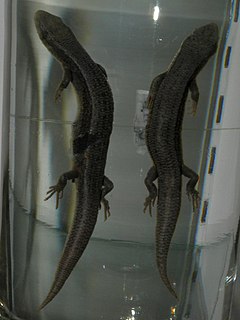 W
WAsymblepharus alaicus is a species of skink found in China, Kyrgyzstan, Uzbekistan, Tajikistan, and Kazakhstan.
 W
WBogertophis subocularis, commonly known as the Trans-Pecos rat snake or the Davis Mountain rat snake, is a species of medium to large, nonvenomous rat snake in the family Colubridae. Bogertophis subocularis is endemic to the Chihuahuan Desert.
 W
WBothrops oligolepis is a venomous pitviper species found in Peru and Bolivia. The specific name is derived from the Greek words oligo and lepis, meaning "few scales"; probably an allusion to the lower numbers of dorsal and ventral scales that it has compared to B. bilineatus. No subspecies are currently recognized.
 W
WCryptoblepharus virgatus, also commonly known as striped snake-eyed skink, cream-striped shinning-skink, wall skink, fence skink or snake-eyed skink is a skink commonly found in southern and eastern Australia. It is an active little lizard, and if threatened will often play dead to confuse the attacker.
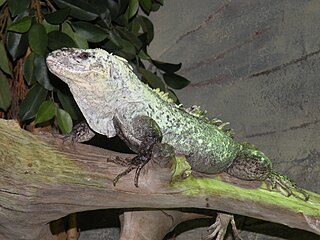 W
WCtenosaura bakeri, also known as the Utila iguana, Baker's spinytail iguana, swamper or wishiwilly del suampo, is a critically endangered species of spinytail iguana endemic to the island of Utila, one of the Islas de la Bahía off the coast of Honduras.
 W
WThe Gran Canaria giant lizard is a species of lizard in the family Lacertidae. The species is found in the Canary Islands.
 W
WThe gray-banded kingsnake, sometimes referred to as the alterna or the Davis Mountain king snake, is a species of nonvenomous snake in the family Colubridae. The species is endemic to the southwestern United States and adjacent Mexico. Some sources list two distinct subspecies of Lampropeltis alterna, as L. a. alterna and L. a. blairi differentiated by patterning and locale, but research has shown them to be color morphs of the same species.
 W
WThe Jamaican boa or yellow snake is a non-venomous boa species endemic to Jamaica. No subspecies are currently recognized.
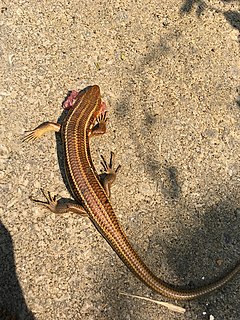 W
WKishinoue's giant skink is a species of skink, a lizard in the family Scincidae, endemic to the southern Ryukyu Islands of Japan.
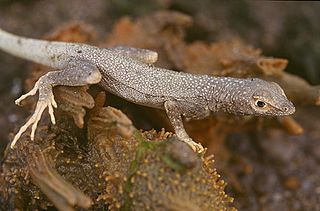 W
WMicrolophus theresiae, commonly called Theresia's Pacific iguana, is a species of lizard in the family Tropiduridae.
 W
WPhelsuma astriata, the Seychelles (small) day gecko or stripeless day gecko is a species of lizard in the family Gekkonidae endemic to the Seychelles.
 W
WPseudemoia pagenstecheri, also known commonly as the southern grass tussock skink or the southern tussock grass skink, is a species of lizard in the family Scincidae. The species is endemic to Australia.
 W
WThe strange-horned chameleon, Rwenzori plate-nosed chameleon or single welded-horn chameleon is a species of chameleon. It is native to the rainforests of the Ruwenzori Mountains of western Uganda and eastern Democratic Republic of the Congo.
 W
WTrachydactylus spatalurus, the spacious rock gecko or banded ground gecko, is a species of lizard in the family Gekkonidae. It is found in Oman and Yemen.
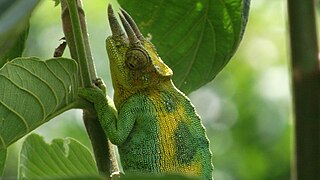 W
WTrioceros johnstoni, known commonly as Johnston's chameleon, Johnston's three-horned chameleon, or the Ruwenzori three-horned chameleon, is an endemic chameleon of the Albertine Rift in Central Africa.
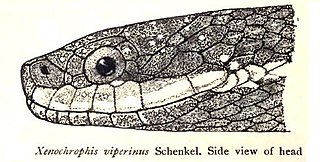 W
WThe viper-like keelback is a species of snake of the family Colubridae.
 W
WThe western swamp turtle, known in Western Australia as the western swamp tortoise, is a short-necked freshwater turtle that is the sister taxon to all other members of the subfamily Chelodininae. As a consequence of the greatly altered habitat in the area in which it occurs near Perth, Western Australia, where it exists in small fragmented populations, the species is critically endangered.